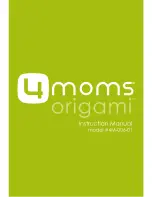
Appendix D
Producing Trigger Outputs
There
are
three
different
methods
to
produce
a
pulse
at
an
exact
position:
1.
Index
to
a
position,
then
while
stopped
use
“
PA
”,
“
U1
”,
or
“
U5
”/”
U4
”
command.
2.
Use
the
Continuous
indexing
method
with
the
“
“
command
to
produce
a
pulse
out
instead
of
stopping
at
the
end
of
indexes.
3.
Set
VXM
to
Pulse
every
“n”
(”n”
is
a
number
from
0
to
32,767)
number
of
steps
on
output
2
U7
Index, Stop, Output
Example:
This
example
Indexes
400
steps
and
makes
a
pulse
on
output
1
for
1
second
*.1"3
Continuous Indexing
Pulse
width
is
settable
with
the
command
described
on
page
43
(default
width
is
10
m
sec.)
Power
and
On-Line
light
will
flash
rapidly
and
VXM
sends
“
ËC
”
to
the
host
w
“
setPAx”
U7
Start
of
Continuous
Index
with
pulse
output.
This
command
is
used
when
it
is
desirable
to
make
several
Indexes
on
one
axis
without
stopping
or
slowing
between
each
Index.
Instead
of
stopping
a
positive
going
pulse
will
appear
on
user
output
2
(I/O,15)
at
each
Index
distance.
This
pulse
would
be
used
to
trigger
measurement/sampling
equipment.
The
"
"
or
"
"
command
must
be
used
as
the
last
command
to
decelerate
to
a
stop
from
the
last
Index.
Memory
usage
=
2
bytes
.
Continuous
Indexes
have
the
following
limitations:
a)
Each
Index
must
be
the
same
motor,
and
direction
should
not
be
changed
unless
speed
is
below
800
steps/sec.
b)
Only
motors
1
and
2
can
be
run
in
this
mode
c)
The
acceleration
value
set
before
the
“
U7
”
command
will
be
used
in
the
continuous
index.
d)
Speed
settings,
Jumps,
Loops,
and
Output
commands
can
be
used
between
indexes.
Pauses
and
Wait
commands
are
not
allowed.
The
hen
a"
8
x"
command
is
missing
or
motor
is
not
the
same.
U9
U91
NOTE:
















































